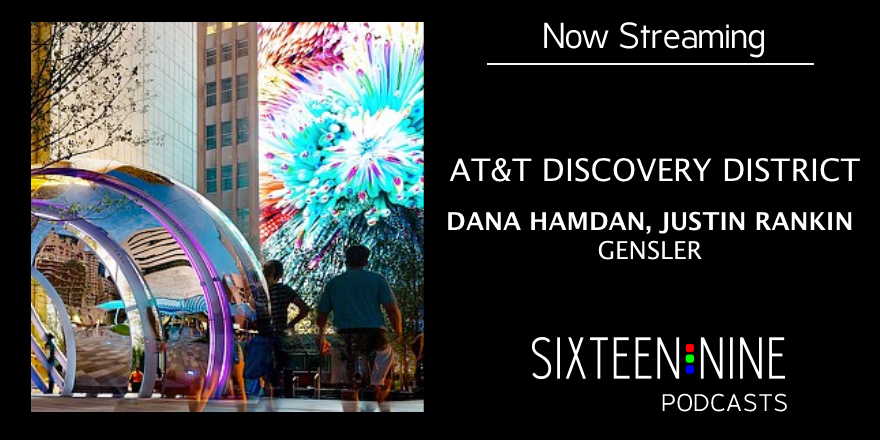
The Hows and The Wows of The AT&T Discovery District, With Gensler Designers Behind It
August 25, 2021 by Dave Haynes
The AT&T Discovery District in downtown Dallas is one of the more ambitious experiential digital projects out there – in the U.S. or globally – with a big reason being the focus from the inception on coming up with something that was more than just the technology circus coming to town.
Telecoms giant AT&T engaged the huge global design firm Gensler to come up with a cohesive, visually exciting design concept for not only its headquarters building in Dallas, but for the area surrounding it – delivering a destination and talking point.
There is a massive LED media wall on the corner of one building, what Gensler calls digital trellises on the urban office campus plaza, and more LED on the walls, support columns and even the ceiling of the head office lobby. That’s coupled with synchronized lighting and something that sounds a bit like a show control system.
It’s super-impressive, and it cost more than a couple of bucks to build, and to sustain. The first wave of creative includes digital art from some of the top people in the field, from Refik Anadol to Moment Factory.
- Rankin
- Hamdan
I had a chance to speak with two of the key people behind the project – Justin Rankin, director of Gensler’s Digital Experience Design Studio, and Dana Hamdan, the Project Manager on the project.
Subscribe to this podcast: iTunes * Google Play * RSS
TRANSCRIPT
Hi, thanks for joining me. The first thing I’d like to do is get a description from you of what the AT&T Discovery District is all about and how Gensler was involved?
Dana Hamdan: Sure, AT&T Discovery District is actually AT&T HQ in Dallas, which happens to be in an urban setting. Not a lot of corporations are headquartered in business districts, and obviously, because it is in a business district, it makes it accessible to the public, and so to say it in a high level and in some depth way, it is a headquarter that’s open to the public and that’s been very successful based on the experiences that we’ve seen in the past a couple of months.
This district, so to speak, has been open for a year and a half?
Justin Rankin: Yeah, we had substantial completion on the project really in September of last year, and due to various circumstances, obviously it’s been a fairly organic process in terms of really opening the district and starting to really activate the space. So really what we’ve seen is over the last two or three months, it’s really come to life in full swing and AT&T has started to really use the space, activate it, promote events, host events, and pop-ups and things like that. So it’s been really exciting to see it finally start to take its stride over the past couple of months.
So if I’m in Fort Worth, I get in my car and I drive into downtown Dallas, find parking somehow and wander over there. What am I going to see?
Dana Hamdan: Hey, you mentioned parking, one of the things that actually make it successful is, and that builds kind of a duality of the program being an employee headquarter, and open to the public. There is actually a parking lot for the discovery district so hopefully, you’ll not have any issues finding parking in that spot.
But basically, the approach to the district is very interesting, and that’s gonna take from its name Discovery District. There are some macro-scale indicators for the space, so driving from probably five city blocks away, you will see a mega screen that is on a natural Terminus to one main street, it’s called an Akard St. in downtown, and then as you approach the district, the screen will fade away, and from your human-scale perspective, a grove of trees will appear, and then in that grove of trees is camouflaged a nice interactive sculpture that we call The Globe, and but you’ll basically see a lot of immersive lighting that will draw you towards the Plaza. So that’s just from an approach standpoint of the district.
So this is a lot of LED displays, but it’s also interactive sculptures, it’s audio, it’s synchronized lighting, all kinds of things. So it’s not just like a big display, and “look at the cool stuff we have on this big display”?
Dana Hamdan: Absolutely. So what we did, basically to give the space a headquarter presence, because before it was just disparate buildings and a number of buildings around a Plaza that was not really used. It was very underused. And, after hours it just gets dark and nobody’s there because it probably doesn’t feel safe.
And so what we did is we knit together a block in the city. We introduced two mega trellises that have media integrated to them to just give a very clear recognizable realm for the Plaza and you get a sense that, “Oh, I’m in one place.” So even though the buildings are not all the same architecture, we tied them with a similar visual, like a consistent cohesive design with these two mega trellises.
And then yes everything is integrated in that kind of is the spirit of the project, and we’ll talk a little bit more about it as we go through this.
Justin Rankin: And with this being AT&T global headquarters, the anchor of the district is the Whitaker tower, which is a 36 story tall building that kind of sits on the Plaza.
So you’ve got that really like a big landmark. The lobby of that, which we can talk more about, is a really impressive, fully immersive experience. So there’s this really nice place, and then, off of Whitaker tower onto commerce street, there’s an entry portal there that we call the VIP entry. So you have this really nice flow of, entering off of commerce street coming through that VIP portal into the lobby to a fully immersive experience, and then from the lobby through these really impressive glass windows, you’re able to look out onto the Plaza.
So from the lobby, you can see The Globe and you can see the big lawn area that’s in the Plaza. You can see the trellis has lit up. You can see all the food and beverage outlets and all of the people and the energy, and so you naturally find your way exploring out into the Plaza, and then once you’re out there, you’ve got The Globe and the media wall, the lawn, and the restaurants and bars and it really becomes a total experience at the end of the day.
What was the brief from AT&T? What did they say they wanted?
Dana Hamdan: So it is interesting because I think the nice part about this project is collaborating with AT&T on really formulating what the vision for this project is, and so this kind of morphed over the years, but at the beginning, the most important thing was to give the employees a campus that they’re proud of, try to reposition the brand of AT&T would, especially with all the focus on media, and then a third, but probably the most important is to give back to the city because they are in an urban business district setting as well.
These were the main tasks from the client, which we’re very happy to sit in visioning sessions and come up with a concept, and we’re very happy with the end result.
Justin Rankin: Yeah, and I would layer may be on top of that, that at a certain point in time, several years ago, there were discussions within AT&T on whether or not to keep their HQ in Dallas or potentially move and relocate their HQ to San Antonio or another city.
The decision was made to stay in Dallas and then on top of that, coincidentally during that same time period is when AT&T and Time Warner merged and so really overnight AT&T with that merger became officially became the largest media company in the world, taking on Warner Media, HBO, all of their sub-brands, and so really that became a big part of the brief was, “We’re the largest media company in the world. We want to give back to our employees. We want to give back to the city of Dallas, so how do we create a destination for all of the above that really is able to solve for all of those different goals?”
That was really a thread throughout the entire strategy, and the design of the immersive experiences, the content, the way that everything is orchestrated was really to put AT&T in that light and help them reposition their brand quite honestly.
Dana Hamdan: It’s not easy when you’re downtown, it’s not easy to have a prominent presence like it’s not like you have a campus. “Oh, it’s known this is the so and so campus. This is the Apple Park or Menlo Park.”
It’s hard, and it gets lost in the urban fabric, and so this was very important for AT&T to be able to give their campus a presence and for their employees to feel proud about where they work, and so it was just a nice vision and nice commitment from the client and again, I think we were very happy with the end product and we’ll talk a little bit more about how we came to make that happen.
Justin Rankin: Yeah, one of the things that makes this so unique is that the campus is completely open and public. So when you look at other Fortune 5, Fortune 10 companies, and you look at their global HQ’s, they’re locked down, they’re Fort Knox, right? So you don’t have a public that can just walk up and come hang out here. It’s the total opposite here.
AT&T has really welcomed the city and the community into their space and into these immersive experiences, which is really unique and has been really exciting from Gensler’s perspective to partner with AT&T on that and bring that vision to life.
Dana Hamdan: Yeah, and it was not easy. When we do projects like that, we usually want to look at precedents, and for this one, there’s really not a lot of precedents that you can look at. In fact, in North America, we couldn’t find a prominent campus setting that is open to the public in an urban setting.
I mean we’ve been to the major campus. Amazon and Salesforce have some similarities, but not quite fully open like Justin was saying, and the rest are remote and they have their own campuses that have limited accessibility.
Yeah, I think about districts that are in the central parts of the city and they tend to be entertainment districts that are built around sports arenas, or ballparks or things like that, and it’s a lot of restaurants and bars and things, but as you say, there aren’t many instances where there’s a campus built around or a district built around an office.
Dana Hamdan: Yeah, but from our standpoint, we think this is going to be a trendsetter campus for corporations to anchor downtowns and anchor such settings and it really plays the duality of the program. You’ve got your employees during the day, not just your employees, but employees of the central district with the amenities that are offered, and then gradually towards the end of the day, you see a very seamless transition, and employees are on their way out. They may grab a drink or a good to a happy hour, but you see that transition of user type from your employee to people who actually live downtown and now are utilizing the space as a normal extension, like a third place, what we call a third place, which is, people that who live downtown don’t have a lot of space in their units.
So it’s good to have the presence of a public space that has all the technology offering of Wi-Fi and is quite enjoyable actually. So it’s a really nice 24/7 activation of the space.
Did the pandemic and the experience of offices locking down and everything else, and that whole idea that, office towers are going to be hollowed out, people are just going to be remote working and there’s no need for these big edifices anymore.
Did any of that reshape the thinking?
Dana Hamdan: Actually, if I may say, it actually reinforced the thinking because eventually, this conversation is not necessarily about the hybrid mode of work or office, but what we found out is that it actually provided what the pandemic is telling people you need, it provided quite a few different modes of collaboration outdoor that you can sit and collaborate in.
And we’ve seen that, like Justin was saying, the space organically opened. There was not a big ribbon-cutting event that happened, but people needed a space where they could be outdoors safely, and whether they’re working or just enjoying other people’s company and we’ve seen articles in major publications, like Fast Company and others, really dwell on and emphasize the need for outdoor collaboration spaces, and we feel that this came just right in time for the AT&T employees actually.
So let’s talk about what was done and why it was done. When you had the brief when you worked out the big idea, how did the components come together?
Why did you decide on a big corner-wrapped LED on the side of one of the buildings and displays that lined the interior of the Whitacre building and so on?
Justin Rankin: So early on, I would say as we approached really all of our projects, there was a lot of strategy put into planning and thinking and our teams working together and working with AT&T and other stakeholders to think through different use cases, modes, activation scenarios, the flow of traffic, viewports, viewing angles, et cetera.
We did a lot of research. We interviewed and spoke with employees. We interviewed and spoke with C-level executives and VIPs and collected all of that thinking to really inform where to invest the energy and concept. And, through that concept, things to help think about what types of platforms make the most sense, so we can get into it in more detail, but when you start to break apart the different digital platforms, whether it’s the media wall or The Globe or the trellises or the lobby, what you’ll find interesting is that there’s a lot of intent put behind the design of those platforms so that those platforms can be leveraged for multiple different scenarios.
A prime example of that is that The Globe sculpture actually sits on a hydraulic turntable that can rotate 180 degrees. So we have these moments in which we can activate this small intimate grove setting, so maybe it’s a singer-songwriter, or it’s a DJ, or it’s someone reading. You can have a small kind of intimate moment and at the same time, you can rotate the globe, pivoted towards commerce street, which is the main thoroughfare through downtown Dallas, and now you’ve got a beautiful and interactive backdrop for a marathon or for a holiday parade or for something else.
So for every platform, we’ve thought through those different scenarios, those were all part of that original strategy and helped us to shape where they should be located, how they should be faced. The media walls specifically, we thought about, as Dana mentioned at the beginning of the podcast, there’s this kind of viewport that you have from five or more blocks away and it perfectly frames the shape and the aspect ratio of the media wall. So that was very intentional, but we decided to wrap the corner because now we have this ability to draw people in from the other side of the block or the other side of the Plaza. We can also provide some really cool content and experiences to people that are sitting at Jackson, which is a kind of a casual beer garden.
Diana, feel free to add to that. But yeah, those were all factors and considerations that led to the final design.
Dana Hamdan: For sure. But I would say if you’re asking us as to why we did what we did, why did we decide that we needed orchestrated platforms?
And really, when we were thinking that, AT&T was really also obviously wanted to make employees proud, but second, they really wanted a shift in their brand and how do they represent their brand? And AT&T is not in the business of selling physical products, they sell an intangible service, and I say that all the time, it doesn’t matter if you have an iPhone or Samsung or an LG or Whatever it is, It’s actually the service that comes through that makes you enjoy your experience, and so we came with this concept that we have this intangible layer, connecting slick and new and futuristic looking platforms that make them come to life and make them feel connected.
And that’s why we have very purposely positioned screens, and then what we wanted to do is tie all that to an invisible thing that you cannot see, right? A content management system that makes these communicate together. It was very important for us that when you step in the district, you feel that you are in a realm, you feel that you feel the power of connection. You can see consistent media messages. You can see something on the media screen and then all of a sudden it loops and it’s in ground lights under your feet, and then it loops and it’s now above your head, in the ground and the lights that are in the trellises, or when it moves in and activates The Globe. So you see that communication, you see that power of connection between these platforms and it’s all powered by AT&T. So that was a play on the brand representation for the client, and it only made sense why they’re in that district.
Justin Rankin: Yeah. It manifests the whole notion of connection, which is that deep kind of core element of AT&T is brand manifest in two ways.
It manifests quite literally in a physical way as we connect the platforms and connect the spaces, but it also manifests through people, the Globe sculpture prime example. It’s an opportunity where we can bring people together into a space, and I will say a safe space where they can be distanced but have a really unique experience and discover an experience that’s maybe not inherent or visible as you’re walking by. So you see the sculpture, that there’s something going on. You may hear something you walk over and you’ve got people and as you’re in the space, you’re now controlling the experience together that you’re having. So there’s definitely multiple elements of that as you navigate through the district, whether it’s the globe or whether it’s in the lobby or other areas in the.
Is the project driven by the art or is there also a nod or thinking around the commercial side of this? Because what I’ve seen are great pieces of content from companies like Moment Factory and so on. I haven’t seen on the big media wall or elsewhere, pitches for an AT&T wireless plan or anything like that.
Dana Hamdan: Yes, this was definitely since day one, this was not meant to be an advertisement platform and it’s so funny to hear it, but I like to walk over there incognito and people don’t know what role I had and planning and leading this place through success, but I like to hear people say, “oh, this is Times Square, but I actually can sit in and enjoy it.”
It’s not full of advertisements and I’ll let Justin speak a little bit more about the strategy behind content but definitely was not meant to monetize the Plaza like that. On the contrary, it was meant to elevate the art and elevate the ambiance setting.
I don’t want to go behind the scenes but I just wanted to ask, and you may not be able to tell me, but I’m curious because I’ve seen other projects that have started as art projects and then advertising finds its way into it somehow, was that a debate or AT&T said right from the brief that no this has to be the experience?
Justin Rankin: Yeah, they’ve taken a pretty hard line from the get-go of maintaining an advertising free space. Now the caveat there obviously is, we’re talking about the largest media company in the world, we do have to acknowledge the fact that AT&T is showing content that is running on the media wall that is promoting AT&T’s properties, movies shows, et cetera.
What I would say though, is the way that has come together, and the intent with that is purely from an entertainment standpoint, right? So these are big motion pictures and shows that people are super interested in and excited about. There are certainly moments of that but to your earlier point, there is no advertising so to speak, sales advertising around products and services.
There’s a really healthy mix, quite honestly, of just beautiful artistic content. You mentioned Moment Factory, they have been an incredible part of the team in many ways, but we’ve got fifteen or more artists and studios and agencies that have contributed on the content front. And we’ve worked really closely all along with the creative director on the discovery district on the AT&T side. His name is Roger Ferris and he’s always had a really strong vision as having really the whole AT&T executive team on what their vision around content was, and we’ve helped to thread together a strategy that’s really guided that, who we’ve worked with. It’s guided by the type of content.
The Gensler team has defined the cadence of that content, the programming, and the run of the show. It is 24/7. So there’s been a lot of thought put into what’s the vibe and what’s the energy level at 9:00 AM on a Monday compared to 8:00 PM on a Friday compared to maybe 3:00 PM on a Sunday, and what you notice when you spend a lot of time in the district is that the energy really changes and morphs over time and even, thinking through the night hours and in wanting to be respectful of the fact that this is a district in the middle of a city, there are hotels and there are condos and stuff. We’ve got this beautiful content that runs through the evening where we take the brightness and the output of that media wall and really tone it down, and put the district in sleep mode, so to speak.
And so we’ve just been really thoughtful about that, and AT&T has been amazing in really investing in the content and putting an emphasis on creativity and art and finding that balance between the entertainment-type content and then just beautiful works of art.
We’ve worked with lots of big artists and have all come together to create this. I think we’ve got right now over 36 hours of original content that are running at any given point through the district.
A lot of these things come out of the gate with fantastic content, and then six months later, people started looking around, “I guess we should change this.”
Do you have a five-year plan or something?
Justin Rankin: We do, and the Gensler team continues to engage with AT&T. They also continue to engage, with their own set of artists and contributors, but very much we’re on a continual content production kind of cadence and schedules. So there’s constantly new content that’s being developed and rolled out, tested, revised, et cetera.
There’s also a lot of feedback that’s being going from content that’s already rolled out. So it’s been important at AT&T to really keep an eye on, and what do people think about it? Do people love this? Do they hate it? Is it annoying? Is it too bright? Is it too fast? So I think they’re doing a great job of collecting that feedback, using that data to then inform what new content gets produced.
The question begs, what are you hearing?
Justin Rankin: So far it’s been great, honestly.
Dana Hamdan: If you use social media and just look up the discovery district, you’ll see. I think this is one where we’re really enjoying people’s reactions to the district.
But I will say when we’ve designed these digital platforms, we’ve designed them with the concept of what Roger Ferris, the creative director of AT&T would call maximum canvas flexibility, and the idea is you can dial in or dial up the media content as much as you want. For example, the lobby has a ceiling that we call the veil because we veiled in the ceiling and it’s a layering of polyethylene, a white membrane that is backed by a very tight tightly knit RGB grid that has probably a diffusion layer.
It’s a very nice system and it could be just a regular white backlit ceiling that all of a sudden can transform into, I don’t know, whales that are swimming in an ocean or whatever it is. So this really, the idea of integrating very seamlessly, integrating the media as architecture and not being an application on a surface really helps with that longevity and being able to activate or not whenever you want.
Yeah, I think that’s the difference between some of the things that I’ve seen, where a company puts in a huge LED video wall and maybe a couple of other things, but they’re just things that are there. There’s no continuity and no real thought around the whole experience. It’s just, “Look at this giant thing we put!”
Justin Rankin: Yeah. The veil is a great example of media architecture at its core. Even the media wall, it’s interesting, one of the things that we wanted to do was get creative. The media wall is so large. It’s so prominent in the Plaza. It’s easy for that to really become an anchor and command all of your attention and there are certainly certain times during the day or the week in which we do that very intentionally, but what we’ve also done is work hard to create and essentially model and render the exact facade of the building that the media wall is applied to.
So there are certain times in which that media wall goes into facade mode and it’s shockingly accurate and people can walk through the Plaza and really not have any idea that there’s an eight-story tall media wall staring right at them. So there’s been some thought put into that as well, and just finding ways to tone down the digital when we want other platforms or other spaces to command more of the attention.
Dana Hamdan: I would say, when we were just drawing concepts for the Plaza, we drove around and studied the side from a contextual standpoint. Every time we drove down that Akard St., we saw that facade and it’s natural Terminus, and we are very lucky that it is an equipment building because otherwise, I wouldn’t even have suggested blocking all that much facade. We were lucky that this is an equipment building.
Justin Rankin: People ask that like this media wall is great, but it really sucks for everyone that’s working in that building because they’ve lost any kind of view. So luckily, as Dana said, there’s no one, where those windows are that we’ve covered up, it’s all equipment, technical equipment, and things like that.
So we haven’t prevented anyone’s view into the Plaza or natural light into their workspace, et cetera. Yeah, got really lucky with that being the capability that we had.
What’s involved in the day-to-day management of all this, all the lighting, the synchronized displays, everything else. Is there an AT&T team, or is Gensler doing that? How does all that work?
Justin Rankin: Yeah, really through the project and through the completion of the project, Gensler was really heavily involved in working with AT&T. All the things I mentioned before, the content strategy, cadence programming, et cetera, a lot of the operations and so as we transitioned, everything was installed, it was done, commissioned, ready to roll, we started to work closely with AT&T to help them to build their own operations team, and so they actually now have a dedicated team who is at the helm of this ship and operating the content management system, operating all the platforms, doing things like maintenance and support, all of that.
So yeah, dedicated staff now. They’re fully running on their own and our involvement at this point and as we move forward is, as I was mentioning before, continuing to help them to ideate concepts and produce new content and keep the big idea going.
How many people do they have working on this full-time?
Justin Rankin: There’s a team of 5-10 that fluctuates. Everyone kind of has some different roles, some dedicated purely to tech, some dedicated purely to CMS, some dedicated more to the creative side. So yeah, nice healthy team.
Dana Hamdan: I don’t know that we know the extent of property management either, because obviously, it’s a big district to take care of.
Justin Rankin: For sure. You’ve got loss prevention, security, events. There’s all kinds of teams that are really tapped into what’s going on in the district on any given day. But from a technology and kind of creative standpoint, there’s definitely a dedicated team focused on it.
What’s been the response from the mayor and the people who run Dallas?
Dana Hamdan: In downtown Dallas, we have an organization called downtown Dallas, Inc that really started a few years ago and came in with initiatives to bring life back and entice people to live downtown and enjoy downtown and open businesses downtown, and I guess the reaction of this organization is pretty much consistent with businesses around the downtown.
I don’t know that I have heard directly from the mayor, but we’ve heard very positive reactions from neighboring businesses in downtown Dallas, and neighboring hotels. As a matter of fact, we’ve seen businesses starting to open around the district and benefiting from the presence of the district and driving more business down there. So all but positive so far.
Justin Rankin: Oh, you think about it. There are two major hotels right across the street and half of their rooms look into this beautiful Plaza, and so without going into detail on that, you can just imagine, the more kind of premium view and amenity that has now been offered to those guests of the hotel.
I’ve actually stayed in both hotels and have talked to some of the staff there and they go on and on about it and what their guests are saying and how positive it is.
Dana Hamdan: And throughout the process of design and envisioning this, it was a very rigorous approval process from neighboring communities and from the city. We had to go through many hearings to just get community consent on what’s being planned. So this was a very inclusive process.
All right. That was super interesting. One of these days, I’ll be able to travel again and come down and have a look at it.
Dana Hamdan: We can’t wait to have you there.
Thanks very much for your time.
Justin Rankin: Absolutely. Thanks for having us.



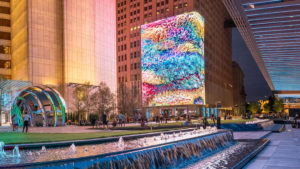
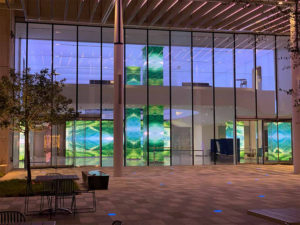
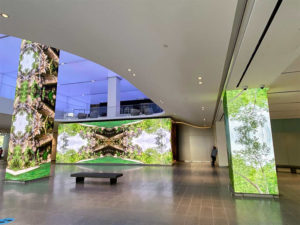
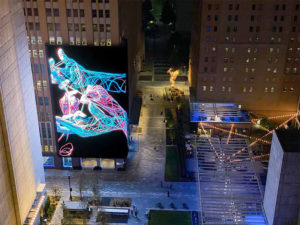
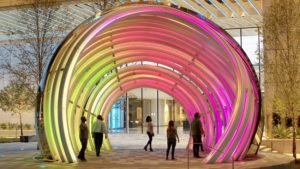
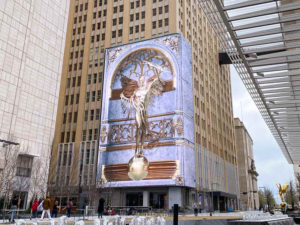

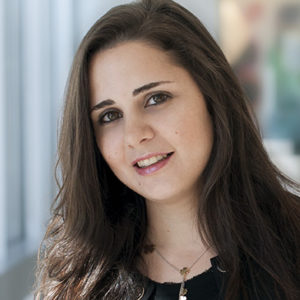
Leave a comment